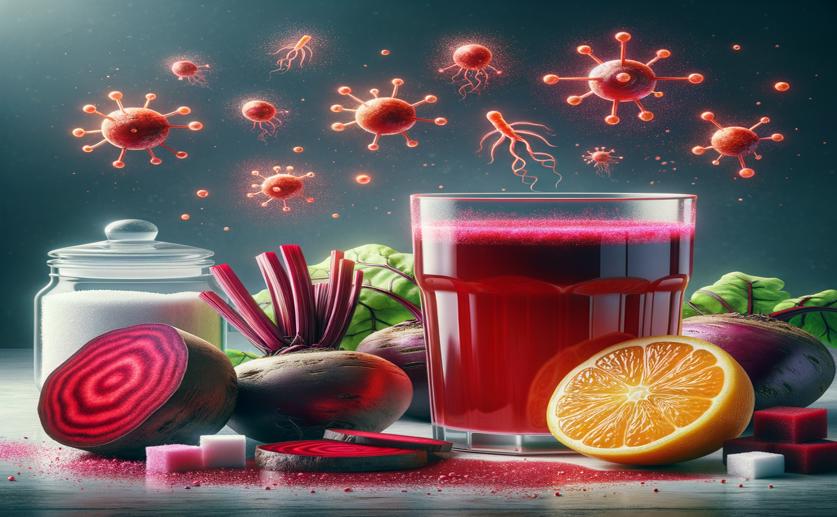
Making Red Beetroot Juice: How Microbes, Sugar, and Acid Behave
Jim Crocker
14th May, 2024

Image Source: Natural Science News, 2024
Key Findings
- Study at Sivas Cumhuriyet University compared probiotic and spontaneous fermentation of red beetroot juice
- Probiotic fermentation with Lc. paracasei produced more lactic acid, less acidic than spontaneous fermentation
- Both methods yielded high levels of good bacteria, beneficial for gut health
References
Main Study
1) Production of red beetroot juice by different methods: Kinetics of microbial growth, sugar consumption, and acid production.
Published 15th May, 2024 (future Journal edition)
https://doi.org/10.1016/j.heliyon.2024.e30448
Related Studies
2) Opportunities and Challenges of Understanding Community Assembly in Spontaneous Food Fermentation.
3) Advantages and disadvantages of non-starter lactic acid bacteria from traditional fermented foods: Potential use as starters or probiotics.
4) Influence of industrial and alternative farming systems on contents of sugars, organic acids, total phenolic content, and the antioxidant activity of red beet (Beta vulgaris L. ssp. vulgaris Rote Kugel).
5) The potential benefits of red beetroot supplementation in health and disease.



 10th April, 2024 | Jenn Hoskins
10th April, 2024 | Jenn Hoskins